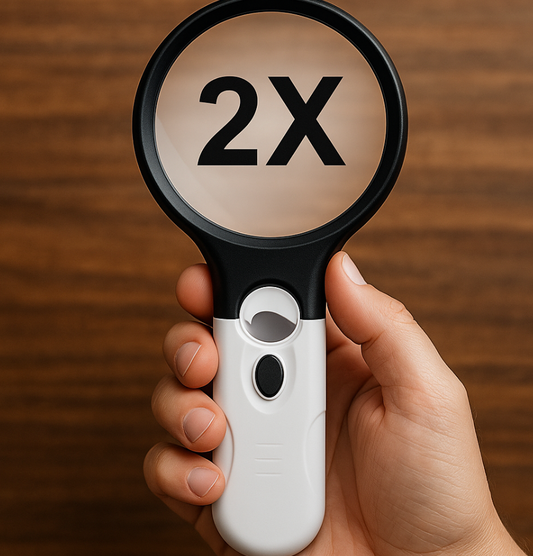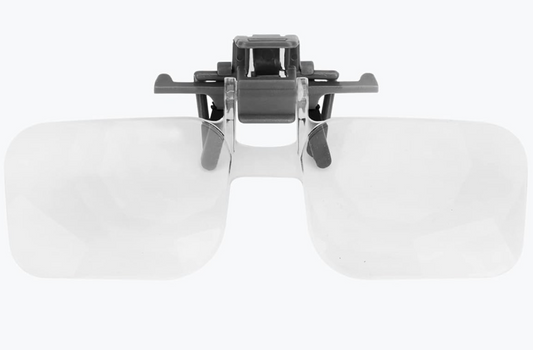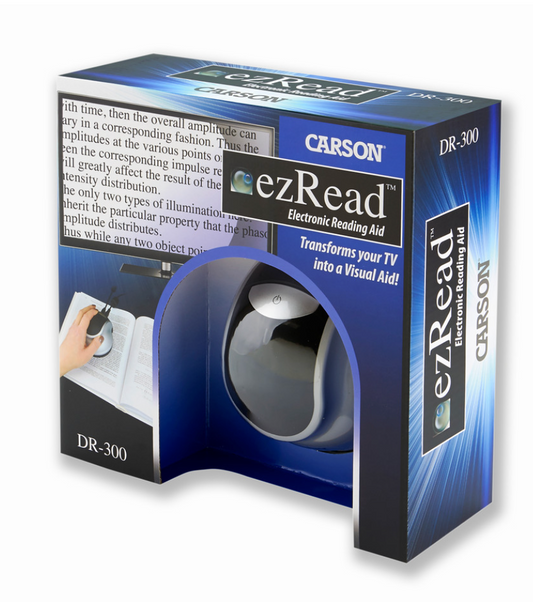Living with Macular Degeneration
Share
Symptoms and Types of Macular Degeneration
- Early Signs: Blurred or distorted vision, dark spots in the central vision, difficulty reading, and trouble recognizing faces.
- Types of Macular Degeneration:
- Dry (Atrophic) AMD: The more common, slower-progressing form, characterized by the thinning of the macula.
- Wet (Neovascular) AMD: The less common but faster-progressing type, caused by abnormal blood vessels leaking fluid or blood into the retina.
Causes and Risk Factors
- Age: Most commonly affects those over 50, with risk increasing with age.
- Genetics: Family history and genetic predispositions.
- Lifestyle Factors: Smoking, poor diet, high blood pressure, obesity, and exposure to UV light or blue light.
Treatments and Therapies
- Anti-VEGF Injections: Commonly used for wet AMD, these injections help slow the growth of abnormal blood vessels in the retina. Typically performed by an ophthalmologist.
- Laser Therapy: Laser surgery may be used to destroy abnormal blood vessels in certain cases of wet AMD. Typically performed by an ophthalmologist.
- Photodynamic Therapy (PDT): A two-step procedure using light-sensitive medication and laser light to target and seal off leaking blood vessels. Typically performed by an ophthalmologist.
- AREDS and AREDS-2 Supplements: Specific vitamin and mineral combinations that may slow the progression of intermediate or advanced AMD.
At-Home Monitoring
- An Amsler grid is a crucial tool for detecting and monitoring macular degeneration, as it helps identify changes in central vision. By focusing on a central dot, individuals can observe any distortions, wavy lines, or missing areas in the grid, which may indicate early signs of macular degeneration. Regular use allows individuals to track visual changes and seek timely medical attention if new distortions appear, enabling early intervention.
- This simple, at-home tool empowers patients to monitor their eye health between professional checkups, aiding in the proactive management of macular degeneration and preserving vision quality.
- We offer a free Amsler grid download for at home monitoring.
Vitamins and Supplements
- AREDS-2 Formula: Vitamins specifically studied for AMD, containing vitamin C, vitamin E, zinc, copper, lutein, and zeaxanthin. We recommend Vitalux Advanced for patients who have been diagnosed with AMD. Otherwise, a good quality multivitamin is recommend for all others.
- Omega-3 Fatty Acids: Often researched for their potential benefits in supporting overall eye health. We recommend PRN Omega-3.
Diet and Lifestyle Changes
- Healthy Eating for Eye Health: Diets high in leafy greens, omega-3-rich fish (like salmon), and antioxidants are recommended.
- Exercise: Regular physical activity may help reduce the risk of progression by promoting circulation and reducing inflammation.
- Quit Smoking: Smoking is one of the biggest modifiable risk factors for AMD, so quitting is often highly encouraged.
Vision Aids and Low Vision Tools
- Magnifying Glasses and Reading Aids: Used to assist with reading or other tasks that require fine detail. Find our recommended magnifiers HERE.
- Screen Magnification and Reading Software: Programs that magnify text on screens or convert text to audio to assist those with low vision. Find our recommend tech aids HERE.
- Adaptive Lighting: Special lighting setups that reduce glare and enhance contrast, making it easier to see. Find our top selling light recommendations HERE.
Progression and Staging
- Stages of AMD: Early, intermediate, and late-stage AMD have different symptoms and treatment approaches. It is best to discuss with your optometrist or eye health provider to know which stage you are and how best to manage your disease.
- Monitoring Vision Changes: Home tests like the Amsler Grid help detect early changes in vision.
Prevention and Lifestyle Modifications
- UV and Blue Light Protection: Sunglasses with UV protection and blue light-blocking lenses are recommended for patients with macular degeneration.
- Screen Time and Eye Health: Always remember the 20-20-20 rule. Every 20 minutes look at an object 20 feet away for 20 seconds. Taking breaks is important for healthy eyes!
New Research and Experimental Treatments
- Stem Cell Therapy: Studies and clinical trials exploring the potential for stem cells to repair or replace damaged retinal cells.
- Gene Therapy: Emerging therapies that may target genetic causes of AMD.
- Drug Developments: New medications and therapies in trials or recently approved for slowing or managing AMD progression.
Support and Community Resources
- Support Groups and Counseling: Many people look for emotional support and resources to help adjust to life with AMD.
- Low Vision Rehabilitation Services: Professionals who help those with AMD learn new ways to perform daily tasks and retain independence.
It is recommended that patients with macular degeneration have regular appointments with their optometrist and in some cases, their ophthalmologist for treatment.
If you're looking for ways to help improve your vision with day to day tasks, please have a look at our recommended magnifiers, vitamins and products can be found here.



